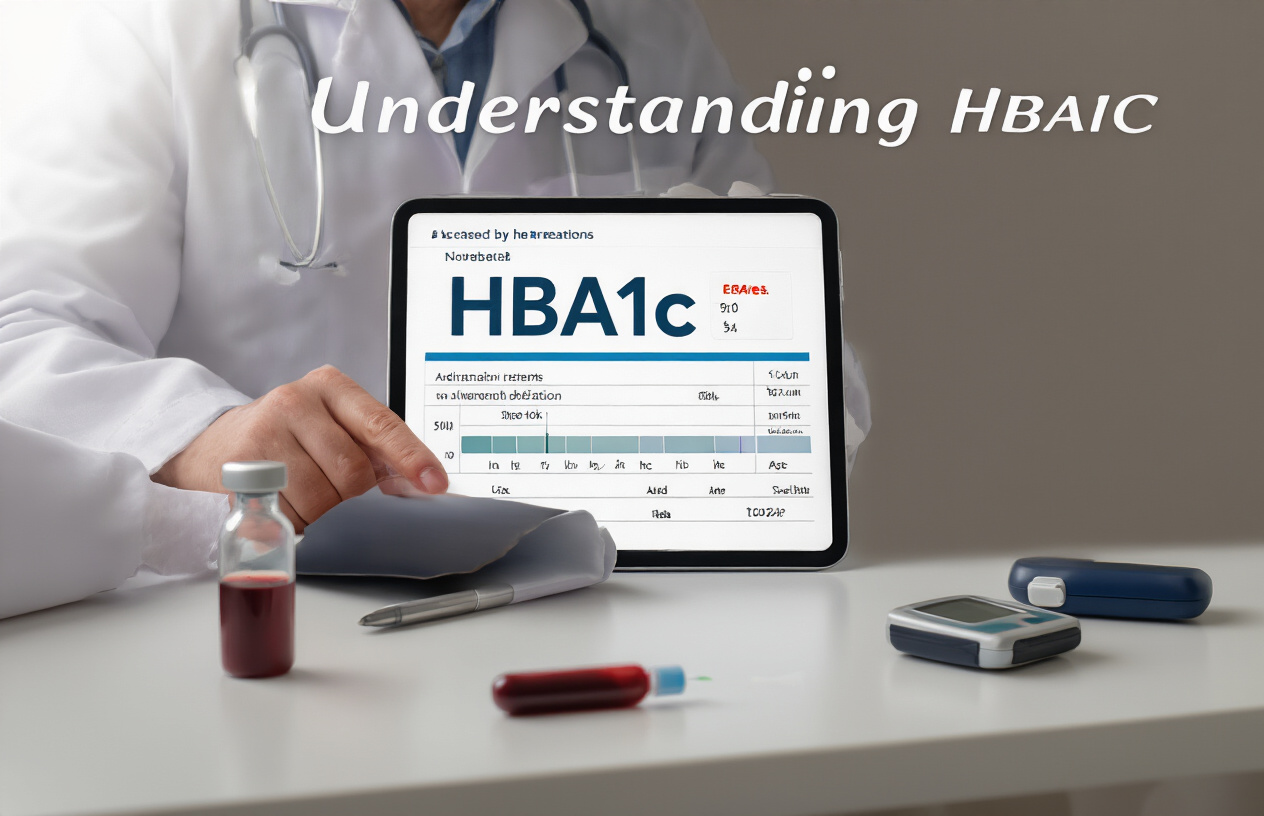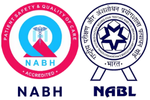“Is Your Diabetes Under Control? The HbA1c Test Has the Answer!”

Ever wonder why your doctor keeps bugging you about that HbA1c test? You’re not alone. Millions of diabetics (and pre-diabetics) get this test every few months, yet many have no clue what those numbers actually mean for their health.
I’m about to break down everything you need to know about the HbA1c test in plain English – what it measures, why it matters, and what your results are really telling you.
The HbA1c test measures your average blood sugar levels over the past 2-3 months, making it way more useful than those finger-prick tests that only show what’s happening right now.
But here’s what your doctor might not be explaining clearly: the difference between an HbA1c of 6.4% and 6.5% could completely change your diagnosis and treatment plan. Let me show you why…
Understanding the HbA1c Test
What HbA1c Measures and Why It Matters
Ever had a doctor talk about your “A1c” and wondered what on earth they’re going on about? You’re not alone.
HbA1c (or just A1c) measures the percentage of your red blood cells that have sugar attached to them. Think of it like this: your blood cells get “sugar-coated” when they’re exposed to glucose in your bloodstream.
The genius part? These cells live for about 3 months, so your HbA1c gives a time-lapse view of your average blood sugar over the past 2-3 months—not just a snapshot of right now.
Why does this matter? Because it’s the gold standard for diagnosing and managing diabetes. While your daily glucose readings might bounce around like a rubber ball, your A1c doesn’t lie about what’s been happening consistently.
A normal A1c is below 5.7%. Between 5.7% and 6.4% means you’re in the prediabetes danger zone. Above 6.5%? That’s when doctors typically diagnose diabetes.
How It Differs from Regular Blood Glucose Tests
Regular blood glucose tests and A1c tests are completely different beasts.
Your finger-prick glucose test? That’s like a photograph—showing your blood sugar at one specific moment. Super helpful for day-to-day management, but it misses the bigger picture.
The A1c test? That’s more like watching a three-month movie of what’s been happening in your body.
Here’s the breakdown:
| Blood Glucose Test | HbA1c Test |
|---|---|
| Measures sugar level at a specific moment | Measures average sugar level over 2-3 months |
| Can vary based on recent meals, stress, activity | Not affected by recent food, stress, or exercise |
| Requires fasting for accurate results | No fasting required |
| Helps with daily diabetes management | Helps assess long-term control and treatment effectiveness |
| Results in mg/dL or mmol/L | Results in percentage |
The real power comes when you use both: daily glucose checks to handle the now, and A1c to track your progress over time.
The Testing Process Explained
How the HbA1c test is performed
Getting your HbA1c checked is actually pretty simple. Unlike some tests that require fasting or drinking nasty sugar solutions, this one’s straightforward.
Your doctor or lab technician will take a small blood sample, usually from a vein in your arm. Just a quick prick with a needle, and they collect a tiny amount of blood in a tube. The whole thing takes less than five minutes.
That blood sample then heads to the lab where they measure the percentage of hemoglobin that has glucose attached to it. Since your red blood cells typically live for about three months, this test gives a window into your average blood sugar levels over that time period.
No special preparation needed. You don’t need to fast beforehand, and you can even take your regular medications. That’s what makes this test so convenient compared to other blood sugar tests.
When doctors recommend this test
Doctors don’t just randomly order HbA1c tests. They have specific situations where checking these levels makes good sense:
- If you’ve been diagnosed with diabetes, expect to take this test 2-4 times per year to monitor how well your treatment plan is working
- When they suspect you might have diabetes based on symptoms like excessive thirst, frequent urination, unexplained weight loss
- As a screening tool if you have risk factors like obesity, family history of diabetes, or are over 45
- During pregnancy to check for gestational diabetes
- After starting a new medication or treatment plan to see if it’s effective
Many doctors now use the HbA1c as both a diagnostic tool and a way to track progress. It’s become the gold standard because it can’t be manipulated by short-term changes to your diet or activity like a regular blood sugar test can.
Interpreting Your HbA1c Results
A. Normal vs. prediabetic vs. diabetic ranges
Got your HbA1c results back and wondering what those numbers mean? You’re not alone.
HbA1c results are pretty straightforward once you know what you’re looking at:
| HbA1c Level | Diagnosis | What it Means |
|---|---|---|
| Below 5.7% | Normal | Your average blood sugar has been in a healthy range |
| 5.7% to 6.4% | Prediabetes | You’re at increased risk for developing diabetes |
| 6.5% or higher | Diabetes | You likely have diabetes |
Think of these ranges as traffic lights. Below 5.7% is green – you’re good to go. Between 5.7% and 6.4% is yellow – proceed with caution and make some changes. Above 6.5% is red – time to stop and take serious action.
Many people sit in that yellow zone without even knowing it. In fact, more than 1 in 3 Americans have prediabetes, but 80% don’t know they have it.
B. Target levels for people with diabetes
If you already have diabetes, your target HbA1c will be different. Most doctors recommend keeping your HbA1c below 7%.
But here’s the thing – that target isn’t one-size-fits-all.
Your doctor might set a different goal based on:
- Your age
- How long you’ve had diabetes
- Other health conditions you have
- Your risk of low blood sugar (hypoglycemia)
- Your personal health goals
For younger people without other health problems, the target might be stricter – maybe 6.5% or lower. For older adults or those with several health conditions, it might be more relaxed – perhaps 8%.
The key is finding your sweet spot. Too tight control increases your risk of dangerous low blood sugar episodes. Too loose control puts you at risk for complications down the road.
Managing Your HbA1c Levels
A. Dietary approaches to improve results
High HbA1c doesn’t have to be your new normal. With some smart food choices, you can bring those numbers down without feeling like you’re on a deprivation diet.
First off, ditch the simple carbs. White bread, pastries, and sugary drinks cause those blood sugar spikes that wreck your HbA1c over time. Instead, go for complex carbs like whole grains, beans, and vegetables that release glucose slowly into your bloodstream.
Fiber is your secret weapon here. It slows down digestion and prevents those post-meal sugar surges. Aim for 25-30 grams daily through foods like:
- Leafy greens
- Berries (yes, fruit can be your friend!)
- Chia seeds
- Lentils and chickpeas
- Nuts and seeds
Portion control matters too. Even healthy foods can raise blood sugar if you eat too much at once. Try using the plate method – fill half with non-starchy veggies, a quarter with lean protein, and a quarter with whole grains.
Don’t forget about healthy fats. Avocados, olive oil, and fatty fish help slow digestion and improve insulin sensitivity over time.
B. Exercise strategies that lower HbA1c
Working out isn’t just about losing weight – it’s one of the most powerful tools for lowering your HbA1c naturally.
When you exercise, your muscles use glucose for energy without needing insulin. This means lower blood sugar during and after your workout. But the benefits last longer than just the hour you spend moving.
Regular physical activity makes your cells more sensitive to insulin for up to 24 hours afterward. Over time, this leads to lower HbA1c readings at your next check-up.
The best exercise plan combines:
- Cardio (3-5 days/week): Walking, swimming, or cycling for 30 minutes gets your heart pumping and blood flowing.
- Strength training (2-3 days/week): Building muscle creates more glucose storage space in your body.
- Daily movement: Taking the stairs or parking farther away adds up throughout the day.
Can’t find 30 consecutive minutes? No problem. Three 10-minute walks spread throughout the day work just as well for blood sugar management.
The key is consistency. A moderate workout routine you can stick with beats an intense program you abandon after two weeks. Start where you are, and gradually increase duration and intensity as your fitness improves.
Beyond the Numbers: HbA1c in Context
A. Limitations of the HbA1c test
The HbA1c test isn’t perfect. No test is.
For starters, it doesn’t work well if you have certain blood disorders like anemia, sickle cell disease, or any condition that affects your red blood cells. Since the test measures how much glucose attaches to hemoglobin in your red blood cells, anything that messes with those cells throws off your results.
Recently had a blood transfusion? Your numbers might be skewed. Your body is working with someone else’s red blood cells now, which don’t reflect your actual glucose history.
Pregnancy can also make HbA1c readings less reliable. Blood volume increases during pregnancy, and red blood cell turnover speeds up, which can lower HbA1c levels regardless of actual blood sugar control.
And here’s something most doctors don’t mention: HbA1c doesn’t capture blood sugar variability. Two people could have identical HbA1c values of 7.0%, but one might have wild swings between high and low, while the other maintains steady levels. That first scenario is much more dangerous, but the HbA1c won’t show it.
B. When alternative tests might be needed
If you fall into any of those categories where HbA1c isn’t reliable, don’t worry – other options exist.
The fructosamine test measures glycated proteins in the blood and gives you a picture of your average blood sugar over the past 2-3 weeks instead of months. It’s particularly useful during pregnancy or if you have a blood disorder.
Continuous glucose monitoring (CGM) systems give you real-time data on your blood sugar levels throughout the day. This catches those dangerous highs and lows that HbA1c misses completely.
The glucose tolerance test remains the gold standard for diagnosing diabetes during pregnancy. It shows how your body actually handles a glucose challenge in real time.
Some doctors also rely on good old-fashioned finger-stick testing, having patients check multiple times daily and keep detailed logs. Sometimes the simplest approach works best, especially when trying to identify patterns of highs and lows throughout the day.
Remember, no single test tells the whole story. Your doctor should be looking at your complete picture, not just one number.
Regular monitoring of your HbA1c levels provides crucial insight into your long-term blood glucose management. Whether you’re living with diabetes or monitoring your health proactively, understanding what your results mean empowers you to make informed decisions about your diet, exercise, and medication. Remember that target ranges may vary based on your individual circumstances, so always discuss your results with your healthcare provider.
Your HbA1c test is just one piece of your overall health puzzle. By combining this valuable information with daily glucose monitoring, lifestyle modifications, and regular healthcare consultations, you can take control of your blood sugar management and improve your quality of life. Small, consistent changes in your habits can lead to significant improvements in your HbA1c results over time, reducing your risk of diabetes-related complications.


